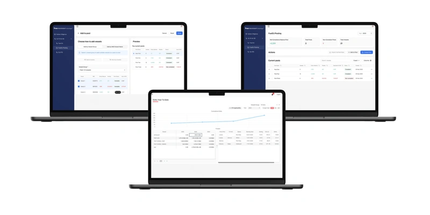AI Agents: Like Owning a Pet Tiger
Geoffrey Hinton, the godfather of AI, has compared developing AI agents to owning a pet tiger.
Speaking this week at the World AI Conference (WAIC 2025) in Shanghai, Yicai Global reported him saying: "Our current situation is like someone keeping a tiger as a pet. A tiger cub can indeed be a cute pet, but if you continue to keep it, you must ensure that it does not kill you when it grows up.”
He says there are two choices: either train it so that it doesn't attack you or eliminate it.
“For AI, we have no way to eliminate it,” he warned. ““AI won’t give humans the chance to ‘pull the plug’ – when that day comes, the AI will persuade people not to do it, because our control over AI would be like a three-year-old trying to set rules for adults.”
As an example of this potential, the startup Anthropic revealed earlier this year that its Claude AI model has the capacity to blackmail engineers it believes are trying to shut it down.
Assigning human-like behavior to AI is not merely a metaphor. Some AI developers are actively seeking more human-like attributes. Researchers in Italy are focused on mimicking the human brain’s response to fear. The idea is to program robots to make decisions the same way that humans do, based on innate emotional responses to unknown stimuli. The results, published in June in IEEE Robotics and Automation Letters, show that the approach can significantly enhance a robot’s ability to assess risk and avoid dangerous situations. The researchers are considering other emotions in future work.
AI agents are already operating in the maritime domain. Pions recently released the next generation of its AI-powered engineer that provides advanced reasoning, inference capabilities and complex task management.
Windward’s MAI Expert™ can detect a vessel deviating from its scheduled port of call, cross-reference that with weather and geopolitical data and automatically notify risk analysts.
The potential reach of AI agents is being expanded with the development of the Spatial Web - a way of connecting the physical world of devices, phones, wearables, robots, drones and AI agents: a way to create a convergence between physical and digital realities.
Last week, IEEE Spectrum published an editorial by Gabriel René and Capm Petersen, Co-Founders of Verses AI, where they explained some of the practical applications of AI agents working in the Spatial Web: “Verses, the Los Angeles-based AI company where we work, recently collaborated with researchers at University College London on a project called EcoNet, a test home where two AI agents, one controlling a thermostat, the other a wall-mounted energy-storage battery system, worked together to keep the space comfortable while saving money and cutting emissions. Every 10 minutes, the AI agents evaluated 729 possible strategies to balance comfort, cost and carbon footprint.”
At scale, an EcoNet-like architecture might enable entire neighborhoods to act a little like intelligent organisms, they conclude.
They cite another example: When an ambulance rushes to an emergency, the ambulance driver still depends on surrounding traffic to notice and react to the siren. But autonomous vehicles may not know which direction the ambulance is coming from or how to properly respond to the ambulance in time, because autonomous vehicles operate without shared context.
The Spatial Web could provide it. The ambulance could issue a Spatial Web query like “Find all autonomous vehicles and traffic infrastructure within 200 meters of my route.” It could then request green lights, reroute cars and alert pedestrians through connected devices.
“Ultimately the foundation we are laying in place paves the way for a Spatial Web that spans not so much pages and data files, but rather people, places and things.”
It’s getting easier to build AI agents. At WAIC 2025, GPTBots.ai launched its Multi-Agent Collaboration Platform designed to enable businesses to flexibly build custom AI teams. GPTBots gave live demonstrations showcasing its ability to solve real-world business challenges, including for a global automotive parts supplier who expressed interest in addressing delays in synchronizing overseas orders with domestic production schedules. GPTBots’ Cross-Border Supply Chain Agent demonstrated how it could transform overseas order data and market trends into actionable production plans, seamlessly integrating with existing enterprise resource planning systems.
With the advances being made, Hinton says humanity is at a pivotal juncture in history. “Humans have grown accustomed to being the most intelligent species in the world – what if that’s no longer the case?”
He urged governments, academia and companies worldwide to work together to make AI benevolent and controllable. In an interview with Yicai Global, he pointed out that countries may have diverging interests in the AI race, but one core consensus can bring all nations together: preventing AI from replacing humans.
Others at WAIC 2025 were positive about the future of AI, emphasizing its benefits rather than the risks of it taking over: “Not replacement but evolution.”
But whose evolution? This week in The Guardian, Meta’s chief executive, Mark Zuckerberg, described his ambitions for developing what he called superintelligence. “Over the last few months, we have begun to see glimpses of our AI systems improving themselves. The improvement is slow for now, but undeniable. Developing superintelligence is now in sight.”


















